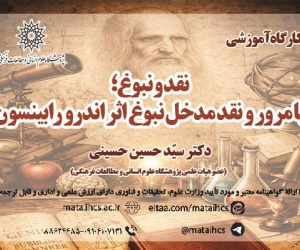آینده فناوری نانوالکترونیک
آرشیو
چکیده
در شش دهه ی گذشته از هنگام پیدایش ترانزیستور دوقطبی در آزمایشگاه های تلفن بل، گسترش پایدار صنعت الکترونیک اندازه ی ادوات نیمه هادی فعال را به کرانه های آن کوچک سازی کرده است. قانون مور که بیان می دارد هر هجده ماه سرعت ادوات دو برابر و ابعاد آن ها نصف می شود، به پایان سلطه ی خود نزدیک می شود. فن آوری تجاری کنونی از یک سو به ابعاد اتمی و از سوی دیگر به چگالی توان حرارتی محدود می گردد. به طور خلاصه، علی رغم نیروی محرک و توان اقتصادی عظیم پشت این صنعت، گلوگاه هایی واقعی در این فن آوری وجود دارند و خود را هم اکنون به وضوح نشان می دهند. مسیرهایی که احتمالاً این محدودیت ها را مرتفع خواهند ساخت خیلی متعدد نیستند، و شامل نانوالکترونیک دوبعدی، شبکه های مِمریستوری، اسپینترونیک، ادوات نیمه هادی مرکب، الکترونیک نوری و نانواپتیک، می شود. هم چنین، انرژی خورشیدی و رایانش کوانتومی از دیگر مقوله های مرتبط هستند که به توسعه ی فیزیک و علم مواد اتکا دارند. این مقاله سه پرسش اساسی را مورد کاوش قرار می دهد: (1) تاریخچه ی توسعه ی این فن آوری از بدو پیدایش چگونه بوده است؟ (2) مسیرهای پژوهشی فعلی در دنیا کدامند؟ (3) ریشه های واماندگی در کشور چیست و راه کارهای جبران آن و هم راهی با فعالیت های جهانی چگونه است؟ در این متن سعی خواهد شد به اختصار برخی از اساسی ترین سوء برداشت ها در مراکز علمی-پژوهشی ملی موشکافی شده و پیش نهادهایی برای اختصاص بودجه و شتاب دهی به ورود و پیشرفت در این قلمرو بیان گردد، به امید آن که نسل بعدی متخصصین ما از فضای گسترده تر و فعال تری برای پژوهش و پیش رفت برخوردار باشند.Future of the Nanoelectronics Technology
Since the advent of bipolar transistor at Bell AT&T laboratories, the constant development of electronics industry over the past six decades have pushed the size of active semiconductor devices to its boundaries. The Moore's law which dictated doubling speed and halving physical dimensions every 18 months is now facing its end pretty soon. Current commercial technology is now being limited to the atomic spacing on one hand, and power density on the other hand. Solar power as well as quantum computing are also another relevant areas which would need certain physical implementations and materials. In short, the moving force and economic power behind this industry is enormous, however, technological bottlenecks are real and showing themselves very clearly now. Directions which may ultimately alleviate these restrictions are not too many, including two-dimensional nano-electronics, memristive networks, spintronics, compound semiconductor devices, optoelectronics interconnects, just to mention a few. This talk will address two important paradigms in this area 1) What are the real challenges in this technology? 2) What are the roots of retardation in our country and what can be done to merge into the international efforts? I will try to plant seeds to resolve some of the most basic misunderstandings in our academia and redirect the technology investments into a much more fruitful direction, with hopes that the next generation of our experts will have a much wider and relaxed atmosphere to excel and prosper.









